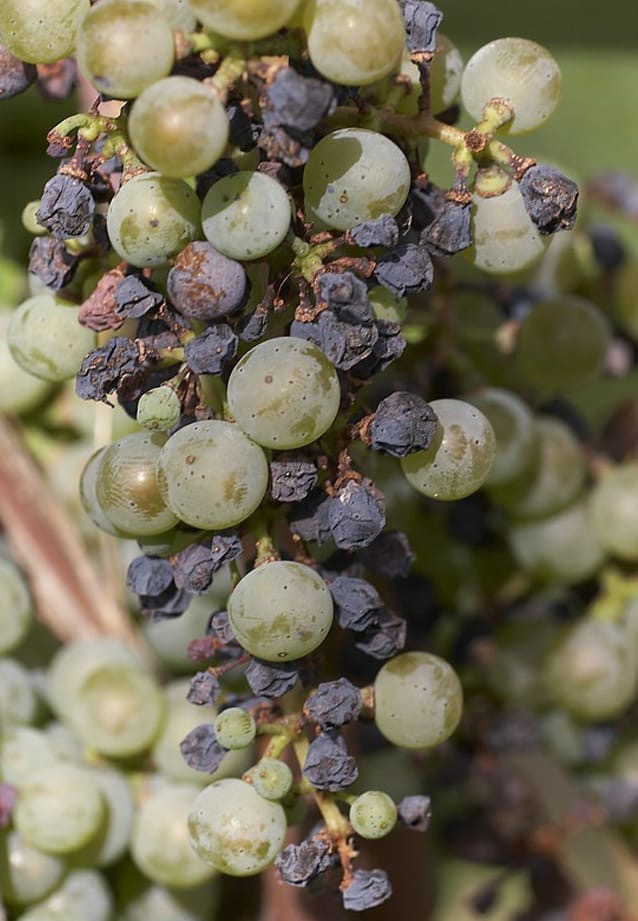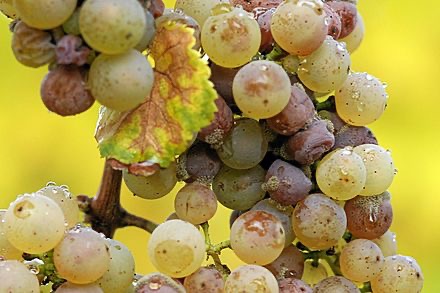Seedless white grape Plant
Seedless White Grape, possibly referring to a specific variety, may have care requirements similar to other grapevines. Plant in well-draining soil with full sun exposure. Provide support for climbing. Water consistently, especially during dry periods. Pruning helps control its size.
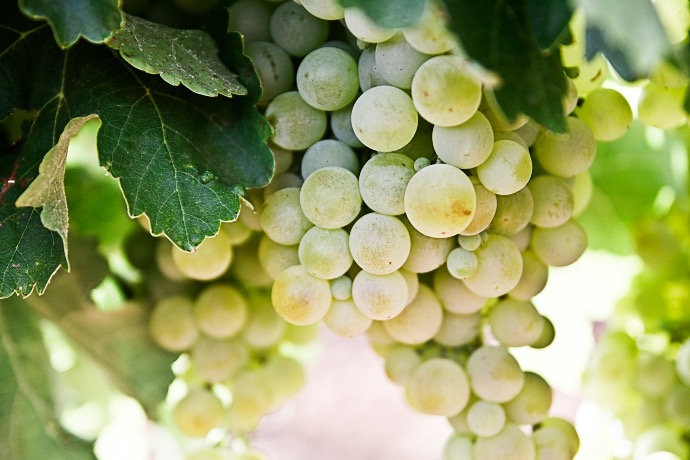
Habit
Vine
Height
2-5 m
Growth
Fast
Soil
Well-drained sandy loam
Shade
Full Sun
Moisture
Moist
Edible
Yes
Medicinal
No
Origin
Mediterranean, Asia
Climatic Condition
Temperate, Warm
Temperature (°)
15-35°C
Humidity (%)
50-80%
Potting media
Peat, compost
Fertilizers
Balanced NPK, organic
Watering
Moderate
Plant Weight
100-200 g
Flowering Time
Spring, Summer
Soil Ph level
5.5 - 7.0
Water Ph level
5.5 - 7.0
Soil EC
1-2 dS/m
Yield Per Plant
5-10 kg/plant
NPK ratio
10:10:10
life Span
Perennial
Health Benefits
Antioxidants, heart health
Suggested Grow Media or Potting Mix ?
50% loam, 25% compost, 25% sand
Suggested Fertigation/Fertilizers
Fertilize every 6 weeks with a balanced fertilizer.
Common Diseases and Remedies
black rot , grey mould
diseased leaves appear whitish gray , dusty , or have a powdery white appearance .
Remove dead and dying leaves, buds and flowers promptly,
Do not leave dead plant material lying around, Reduce humidity by improving ventilation and do not overcrowd plants.HEALTH BENEFITS
· Packed with antioxidants, including resveratrol, which supports heart health.
· Good source of hydration and natural sugars for energy.
· Supports brain function and reduces oxidative stress.
· Contains fiber, aiding digestion.
What Is An Seedless white grape?
White grapes are green in color, and are evolvedarily derived from red grapes. Mutations in two regulatory genes of white grapes turn off production of anthocyanins, which are responsible for the color of red grapes.
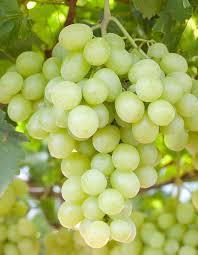
What Are The Different Types Of Seedless white grape Plants?
Thompson Seedless: Also known as Sultanina, this is one of the most popular and widely grown white grape varieties. It produces medium-sized, oval-shaped grapes that are sweet and seedless.
Perlette: Perlette grapes are small to medium-sized with a slightly elongated shape. They are crisp and sweet, making them popular for fresh eating and raisins.
Princess: Princess grapes are medium-sized and round with a pale green color. They are known for their sweet flavor and are often used for fresh eating and making white wine.
Rish Baba: Rish Baba grapes are large and oval-shaped with a pale green color. They are very sweet and have a distinctive muscat flavor.
Autumn King: Autumn King grapes are large and round with a golden-yellow color. They are very sweet and juicy, making them ideal for fresh eating.
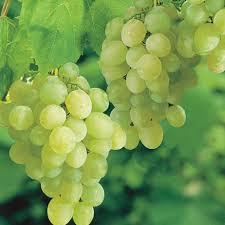
Location
Grapes grow best in well-drained, organic soil with a pH of 6.5–7.0 and a low water table. The soil should be rich, deep, and fertile, and contain clay, slate, gravel, shale, or sand. Gravelly soils drain well and reflect the sun's warmth, which helps the vines. The soil should be at least one meter deep, and have good air circulation to help prevent fungal diseases.
Sunshine
White grapevines (Vitis vinifera) require 7–8 hours of full sun per day to thrive. Less light can lead to lower fruit quality, increased powdery mildew, and fruit rot. The morning light is particularly beneficial. During the budding and flowering stages in spring, ensure your vines get plenty of light to set the stage for a bountiful harvest.
Soil
Grapes can grow in a wide range of soils, including sandy, clayey, and loamy, as long as they are well-drained and have a pH of 6.5 to 7.5. The soil should also have a low water table, with an EC less than 1.0, and be at least 1 meter deep.
Hydration
Grapes typically need 25–35 inches (635–890 millimeters) of water per year. The amount of water a grapevine needs depends on several factors, including climate, soil, and variety. For example, a fully trellised vine on a hot day may need 8–10 gallons (30.3–37.9 liters) of water per day, while a less vigorous vine may need 6–8 gallons (22.7–30.3 liters) per day.
Nourishment
Grapes need a variety of nutrients to grow and produce, including macro- and micro-nutrients. These include nitrogen, phosphorous, potassium, magnesium, boron, zinc, manganese, iron, and copper
Issues
Diseases: Fungi like downy mildew, powdery mildew, grey mold, black rot, and anthracnose can affect berries, reducing yield and quality. Crown gall is caused by a bacterium and can kill the plant. Other diseases that can affect grapes include bacterial leaf spot, alternatoria blight, blue mold rot, black mold rot, and green mold rot.
Weather: Unprecedented changes in weather can cause crop loss.
Soil and water: Soil and water salinity in Maharashtra, drought in tropical areas, and short ripening period in the north can cause issues.
Benifits-
Grapes contain many important vitamins and minerals, including copper and vitamins B and K.
May aid heart health. ...
High in antioxidants. ...
May have anticancer effects. ...
May protect against diabetes and lower blood sugar levels. ...
May benefit eye health. ...
May improve memory, attention, and mood. ...
May support bone health.
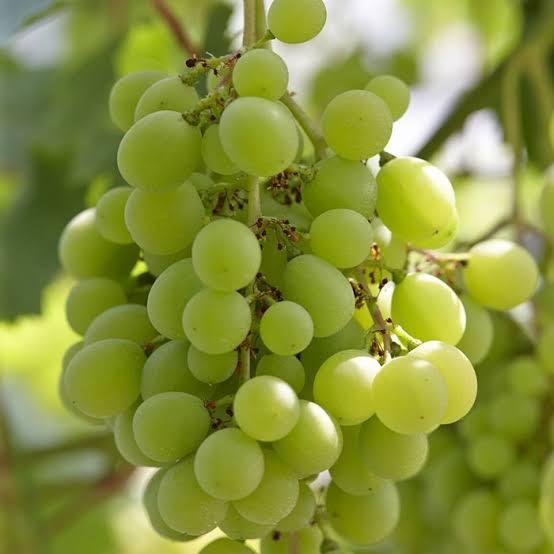
FAQs About Growing Seedless white grape
Why are white grapes called white?
evolutionarily derived from the purple grape.
What are the facts about white grapes?
owe their golden yellow colour to the presence of flavonols, yellow colour pigments, but mostly to the absence of anthocyanins
Why do grapes turn white?
That powdery-looking coating—called bloom—is a natural substance that seals in the fruit's moisture and protects against insects and bacteria.
.Is white grape alcoholic?
white grape is non- alcoholic.
What colour is white grape?
Green in colour
